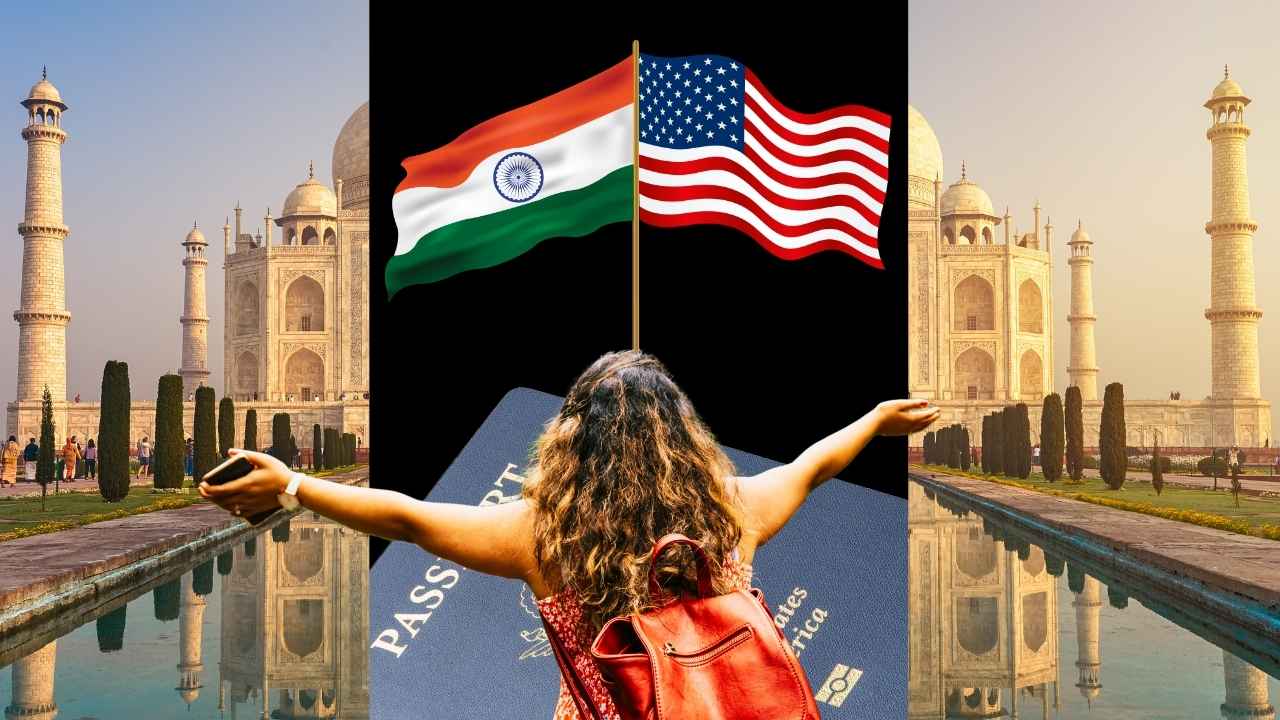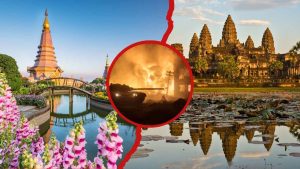The United States has once again issued a Level 2 travel advisory for India, cautioning US citizens to exercise increased vigilance while traveling across India. The updated advisory, released by the US Department of State on June 16, 2025, outlines a series of threats—ranging from violent crimes to terrorist attacks—and identifies specific regions in India that American citizens should either avoid or approach with heightened caution.
What is a US Level-2 Travel Advisory?
The advisory is part of a four-tier system used by the US government to inform travelers of safety risks in foreign nations. The four levels are:
- Level 1 (Blue): Exercise normal precautions
- Level 2 (Yellow): Exercise increased caution
- Level 3 (Orange): Reconsider travel
- Level 4 (Red): Do not travel
These advisories are determined based on several risk indicators, including crime, terrorism, civil unrest, health emergencies, natural disasters, and more. Level-2 implies elevated risks in specific areas, requiring travelers to stay informed and take appropriate precautions.
While India continues to fall under Level 2 (yellow)—a category that signals “increased caution”—this update places renewed emphasis on the threats of violent crime, especially sexual assaults, and underscores the ongoing risks of terrorism in certain areas.
Why the US Has Classified India Under Level 2
The Level 2 travel advisory for India is not new. India has remained under this level for several years, but the reasons behind the classification have evolved.
According to Christopher Clary, Associate Professor of Political Science at the University at Albany, earlier advisories focused mainly on the risks of terrorism and insurgency. However, the recent update shifts more attention to violent crimes, particularly those targeting women. The advisory specifically points out the rise in rape cases and other forms of sexual violence, even in areas popular among tourists.
The advisory states:
“Rape is one of the fastest-growing crimes in India. Violent crimes, including sexual assault, occur at tourist locations and crowded public spaces.”
It also warns that terrorist attacks could occur with little or no warning at:
- Tourist sites
- Transportation hubs
- Government buildings
- Markets and shopping malls
High-Risk Zones Identified in the Travel Advisory
Jammu & Kashmir
Among the most notable warnings is the advisory against travel to Jammu and Kashmir region, with the exception of eastern Ladakh and its capital, Leh. The region is cited for persistent terrorist threats and civil unrest. Incidents of violence in key tourist destinations like Srinagar, Gulmarg, and Pahalgam have kept the region under constant surveillance.
This advisory follows the tragic April 22 attack in Pahalgam, where gunmen opened fire on tourists in Baisaran Valley, killing 26 people. It was the deadliest attack on tourists in the region in over three decades.
India-Pakistan Border
The US government also discourages travel near the India-Pakistan border, describing the area as a high-risk conflict zone. Heavy military deployment on both sides of the border and unpredictable escalations in tension have made it unsafe for foreign travelers.
Notably, the only official crossing allowed for non-citizens is the Attari-Wagah border in Punjab. Furthermore, travelers intending to cross into Pakistan must already possess a valid Pakistani visa issued from their home country.
Manipur
The advisory adds that the northeastern state of Manipur should be avoided entirely due to ethnic violence and widespread displacement.
Since May 2023, clashes between the Meitei majority and the Kuki-Zo tribal communities have led to over 250 deaths, more than 60,000 displacements, and the destruction of thousands of homes and religious sites. These tensions remain unresolved, with frequent outbreaks of violence continuing to destabilize the region.
States Requiring Special Authorization for US Officials
The US government has highlighted several other regions where its personnel are restricted from traveling without prior authorization. These include eastern Maharashtra, northern Telangana, and western parts of West Bengal.
The advisory explains that due to Naxalite activities, these areas pose a significant threat to foreign nationals. As a result, American diplomatic staff must obtain special approval before entering these regions.
Additionally, entire states such as Bihar, Jharkhand, Chhattisgarh, Odisha, and Meghalaya are also under special scrutiny. US government employees are only allowed to visit their respective capital cities unless explicitly approved. These regions have long been affected by Maoist insurgencies and sporadic violence targeting Indian security personnel.
Advisory for the Northeastern Region
The advisory also names other northeastern states such as Arunachal Pradesh, Sikkim, Nagaland, Assam, Mizoram, and Tripura. While the advisory stops short of completely restricting travel to these regions, it urges travelers to reconsider visiting areas outside the capital cities.
Historical insurgent activities, including bombings of buses, railways, and markets, have left behind a legacy of instability, even if recent years have seen fewer incidents.
Border and Legal Concerns for Travelers
Another notable warning pertains to crossing the India-Nepal border by land. According to the advisory, multiple US citizens have faced immigration-related detentions and fines due to misunderstandings about visa validity.
It emphasizes that electronic visas are not accepted at land border crossings, and even those with valid paper visas have experienced legal complications. This has resulted in prolonged detentions, fines, and—in some cases—court trials.
Concerns for Satellite Phones and GPS Devices
The advisory also reiterates that carrying satellite phones or GPS devices into India is strictly prohibited under Indian law. Travelers violating this rule may be fined up to $200,000 or sentenced to prison for up to three years. This law has been in place for years and is strictly enforced, especially in high-security zones.
Women Travelers Urged to Take Extra Caution
One of the most prominent themes of this updated advisory is the heightened concern for women traveling solo in India. While India is a culturally rich and diverse country with much to offer, female travelers are being advised to avoid venturing out alone, especially after dark. Reports of harassment and physical assaults at tourist locations continue to be a serious concern.
Based on that US travel advisory board urges its women citizen, not to travel solo in India.
All travelers are advised to stay in well-reviewed accommodations, avoid isolated areas, and keep family and friends informed of their travel plans. Those needing emergency assistance in rural or high-risk zones may face limited support, as the US government has acknowledged its restricted capacity to respond effectively outside major urban centers.
Which Parts of India Are Still Considered Safe?
Despite the alarming warnings for some regions, much of India remains safe for international travelers, especially in the Southern and Western parts of the country. These areas are home to some of India’s most popular and well-secure tourist destinations, drawing millions of visitors every year.
In Western India, Rajasthan, Gujarat, and Maharashtra are considered safe. Cities like Jaipur, Udaipur, Ahmedabad, and Mumbai have long-standing reputations for hospitality and are regularly visited by international tourists. These states have not reported significant risks associated with violent crime in recent years.
Southern India remains a favored destination for foreign travelers. Karnataka’s capital, Bengaluru, is an international tech hub that also serves as a gateway to the scenic hill stations of Coorg and Chikmagalur. The Nilgiri mountains offer peaceful retreats in Ooty, Coonoor, and Kodaikanal—perfect for those seeking nature and tranquility.
Kerala, often referred to as “God’s Own Country”, is another highlight. With its serene backwaters, lush greenery, and Ayurvedic wellness retreats, Kerala’s destinations like Munnar, Alleppey, Wayanad, and Thekkady are regarded as both beautiful and safe for overseas tourists.
Goa and Pondicherry (Puducherry) are also considered safe for foreign tourists. These coastal enclaves are popular among backpackers, couples, and solo travelers. Goa’s Arambol, Morjim, Agonda, and Palolem beaches, and Pondicherry’s Auroville are some of the top picks among international visitors.
In Northern India, tourist-friendly areas such as Ladakh, Himachal Pradesh, and Uttarakhand have not been flagged in the updated advisory. The Himalayan destinations of Manali, Leh, and Rishikesh continue to attract adventure seekers and spiritual travelers alike. Even in West Bengal, hill stations like Darjeeling, Kalimpong, and Kurseong remain safe for travel.
Conclusion
The Level 2 travel advisory for India reflects a complex reality—while certain areas do pose significant risks due to terrorism, crime, or civil unrest, a vast majority of the country remains open and safe for exploration, particularly for those who are well-prepared and informed.
Travelers are encouraged to stay updated through official channels like the Overseas Security Advisory Council (OSAC), register with the Smart Traveler Enrollment Program (STEP), and always carry appropriate travel documentation. By understanding the advisory in detail and following local laws and safety guidelines, American visitors can continue to enjoy the rich cultural and natural beauty that India has to offer.
How Do You Think?


![Top Travel News of July 2024 [First Fortnight ] 3 Read more about the article Top Travel News of July 2024 [First Fortnight ]](https://travelentice.com/wp-content/uploads/2024/07/Top-travel-news-July-2024-300x169.jpg)




